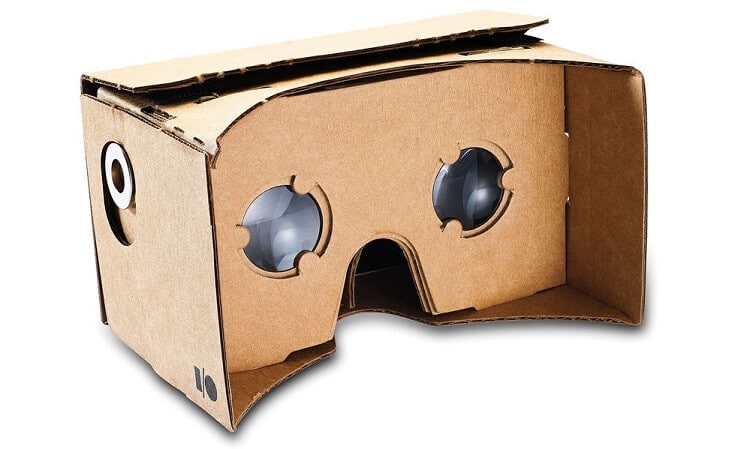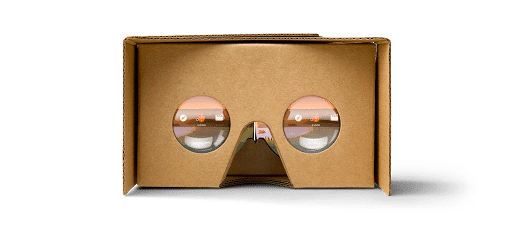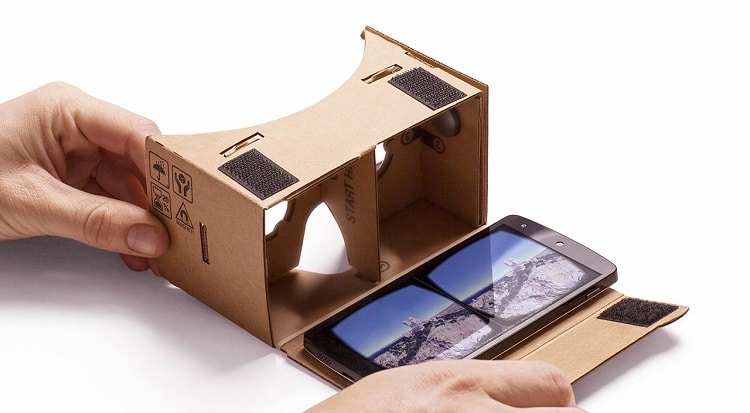Google Cardboard Review: Features, Pros and Cons
Virtual reality gaming is on the rise. Sure, the old school VR style has been around awhile, but with new gaming tech comes new gaming experiences. Google Cardboard is just one of the innovations to fully immersive VR that puts gamers right in the middle of the action. How do you know which is the best platform or has the features you need? Check out our Google Cardboard review, so you can get a sense of what it offers.
Google Cardboard Features

- Simplistic Yet Functional Design;
- Easy to Use;
- Turns any smartphone into near VR experience;
- Tons of content ready to use;
- Very customizable.
The Good
- Inexpensive Intro into VR. The low price of the Google Cardboard headset means that it really is worth trying out even if you are not a passionate gamer. It’s a good foray into the virtual reality world that will do the job of letting you see whether VR is something you’re into. That way you can invest in more VR equipment later with confidence.
- Cardboard App. Google’s own “Cardboard” app companion to the headset is probably one of the best apps you can get for your VR experience. It helps you set up the product properly.
- Very User-Friendly. When you get the Google Cardboard, you’re pretty much ready to start playing almost instantly. Just a very quick set-up as you fold the headset into the proper configuration, pop your smartphone into the headset, and you’re set. Note that you can also buy a fully constructed ready to go headset if you prefer.
- No need for extra software. Google Cardboard’s design means it’s already geared toward working with your smartphone as is, so there is no need to worry about the hassle of downloading or installing extra stuff to make it work.
The Bad
- Limited Content. While many reviews will boast that there is “tons” of content out there for the Cardboard, that isn’t strictly true. You may find a lot out there, but for now what you do find will likely be mostly shorter, demo-like items that simply help you test out the capabilities of the Cardboard.
- Shorter Playtimes. The headset can be uncomfortable to wear for longer periods of time, which means you’re more likely to have shorter playtimes
- Not Highly Intuitive. While the Cardboard app can help you find some of the content, a lot of it is spread out. There isn’t really a primary unified space that stores all of the possible content compatible with Cardboard VR, nor can it really intuit what you might enjoy, etc.
- Only the Basic VR Experience. Keep in mind that this really is best as a virtual reality intro device. Our Google Cardboard review takes this into consideration. Other systems can track head movement, have you use your hands in more complex ways, and other more immersive experiences.
About Google Cardboard

Design
The Google Cardboard’s design has no bells or whistles, which speaks to its primary use of a VR intro device. Aside from the cardboard frame of the device itself, it comes with two specialized lenses that aid in turning your smartphone into a VR-capable device, at least visually. There is also a magnetic “button” installed so that you can still interact with your phone’s features during gameplay, while it is encased in the Cardboard. The design is understated by includes all of the core features necessary for VR.
Visual Performance
The quality of your display is going to depend upon the phone you’re using. Therefore our Google Cardboard review will discuss hardware limitations to consider. Most phones do not have the capability of fully realizing the high quality virtual reality apps available. Outdated or slow processors and possible internal memory issues will also affect the VR experience here.
Audio Performance
If you are using headphones, you’ll be able to take advantage of Google’s Spatial audio, provided app developers incorporated it. The sound system takes the location of a virtual sound and plays it in conjunction with the location of your head, basically. This allows you to experience the sound as you would in a real environment.
How to Assemble the Cardboard

1. Remove the Cardboard from its sleeve.
2. Detach Velcro strips at top.
3. Fold out the two flaps.
4. Note the strips on the flaps, then fold down bottom section.
5. Remove items from middle of kit.
6. Fold section with flaps over until they meet Velcro on sides.
7. Fold flaps down until Velcro is secure.
8. You have 3 Velcro strips. Remove adhesive backing from first strip, place on side of viewer.
9. Place second strip on opposite side, lining it up with the first.
10. Attach two side straps to sides of viewer, line everything up.
11. Fold over front cover, place third Velcro strip in middle, right on top.
12. Install NFC tag on front cover.
13. Install nose padding.
14. Remove protective film from lenses.
Google Cardboard Compatibility
You’re good to go with almost any smartphone, but no Google Cardboard review is complete without compatibility specs. You need either Android 4.1 or higher, or an iOS phone with 8.0 or higher. Note that some phones will be incompatible due to lack of a gyroscope. If you’re having trouble viewing images, make sure you’re using the correct viewer profile – the Cardboard app will assist with this. If your phone is too large or small for adequate viewing, hold the viewer with both hands, or remove the phone case if applicable, to lessen the size.
Summing Up
While there are limitations, our Google Cardboard review finds that the product offers a quick, easy and user-friendly way to get started in the amazing world of virtual reality. It has some neat basic features, and is a veritably risk-free way of seeing if VR is a gaming experience you’ll enjoy.